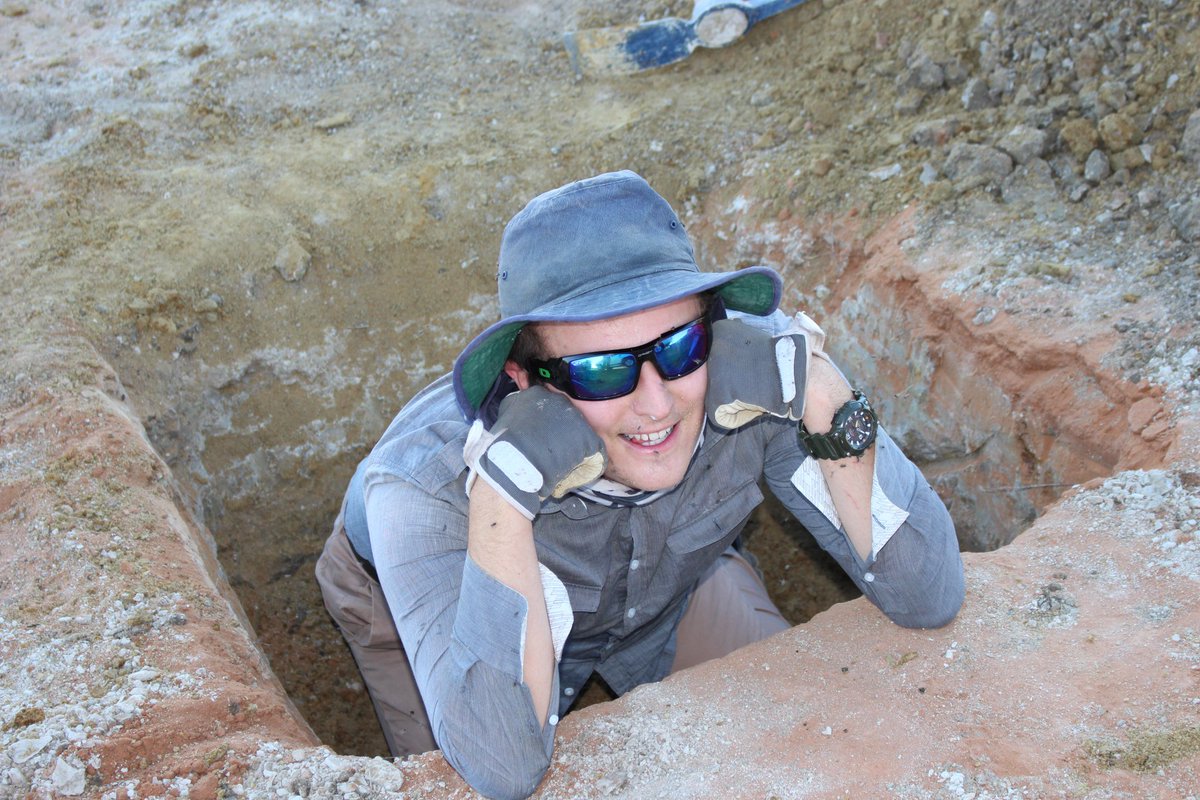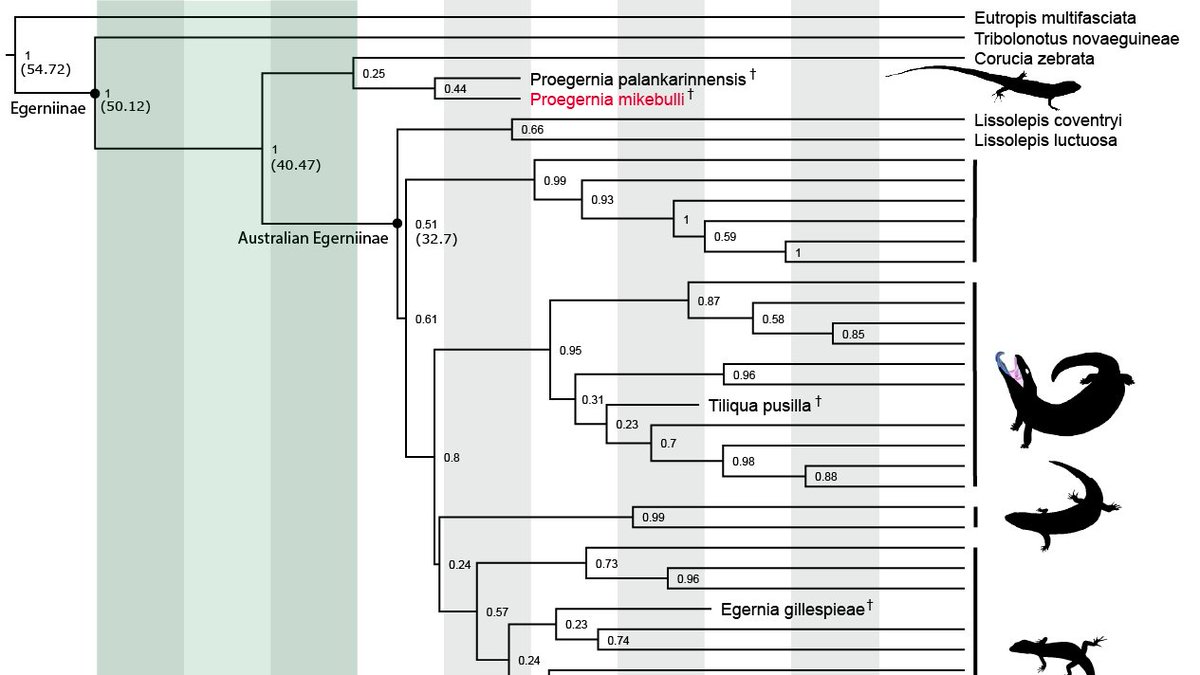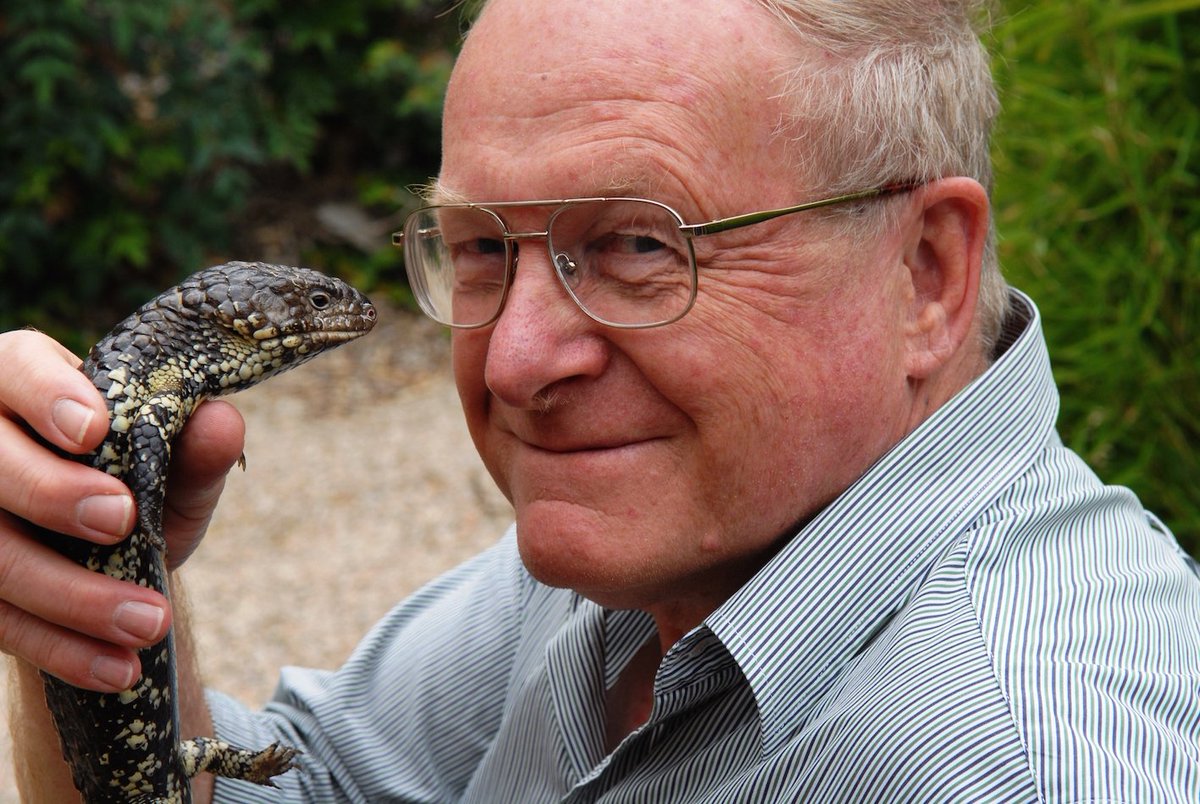Today you might be seeing a bit about fossil skinks in your news feed.
We've described a new 25 million yr-old fossil egerniine from the Namba Formation in South Australia. It will be #openaccess any minute now in Royal Society Open Science, but I'll break it down for you:
We've described a new 25 million yr-old fossil egerniine from the Namba Formation in South Australia. It will be #openaccess any minute now in Royal Society Open Science, but I'll break it down for you:
The Namba Fm on Frome Downs Station has been visited numerous times since the 1970s by palaeo teams from @Flinders, @SAMuseum, and @museumsvictoria
2017 was my first visit. It was pretty hot out there in March
2017 was my first visit. It was pretty hot out there in March

We sampled a rich lens of fish bones eroding out in pockets around Lake Pinpa, and at Billeroo Creek a few km north.
Only after we had these bags of sediment sieved and sorted did we realise we had our first fossil skink!
Only after we had these bags of sediment sieved and sorted did we realise we had our first fossil skink!
The following year we targeted the 'Fish Lens' which turned out to have skinks, possums, frogs and birds among the fish fragments
Honours student Nathan Brown started investigating the palaeoenvironment, by digging some impressive trenches in the clay
The end result being that we now know where the Fish Lens sits in the Namba Fm, we have more insight into the lake-side environment 25 mya, and we have enough of this skink to fit it into a family tree
Our new skink Proegernia mikebulli is the oldest representative of the Australian Egerniinae, the social skinks, so it seemed only fitting that it be named for Professor Mike Bull. A man who inspired generations of herpetologists to study egerniine ecology & behaviour @Flinders

 Read on Twitter
Read on Twitter





